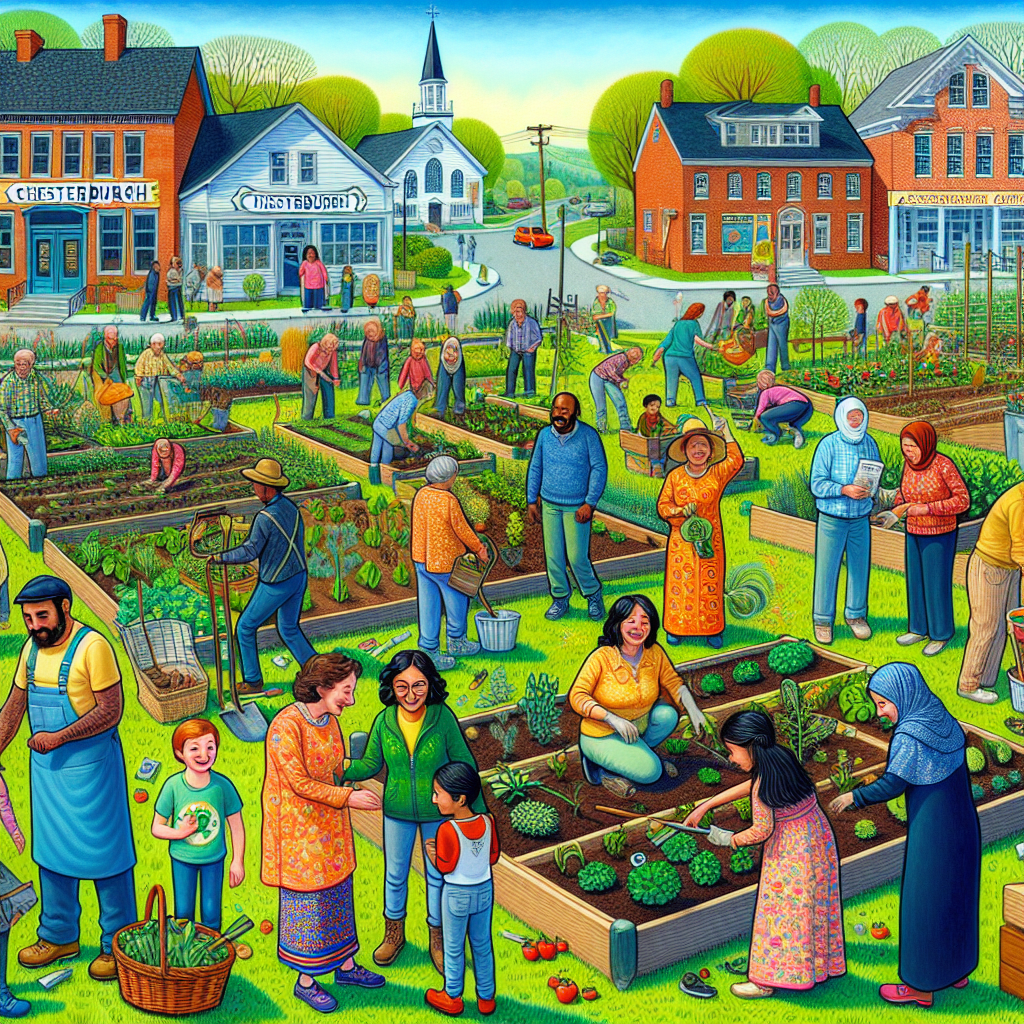"Rooting Community and Hope: Chesterburgh’s Maple Street Garden Blossoms Together"

On a crisp spring morning in Chesterburgh, the quiet hum of the town was gently unsettled by the arrival of a new community garden initiative. Spearheaded by the Chesterburgh Neighborhood Association, the project aims to transform an unused lot on Maple Street into a shared green space for local residents. What was once an overgrown patch of grass and forgotten debris is now set to become a hub for gardening, education, and neighborhood connection.
The lot, spanning roughly half an acre, sits nestled between a row of quaint homes and the town’s small public library. For years, it was often overlooked, occasionally used as a shortcut but mostly avoided due to its untended state. That changed last fall when the neighborhood group proposed turning it into a community garden, following growing interest in urban gardening and sustainable living.
“It’s about reclaiming a space that belongs to all of us,” said Ellen Rivera, president of the Chesterburgh Neighborhood Association. “We wanted to create a place where people can grow food, share knowledge, and build relationships.” Rivera, who moved to Chesterburgh over a decade ago, describes the garden as a way to bring the community closer, especially after months of isolation brought on by the pandemic.
Initial preparations began in early March, with volunteers clearing brush and debris, setting up raised beds, and planting early seedlings like lettuce, kale, and radishes. The group also coordinated with the Chesterburgh Public Library to plan workshops on gardening techniques and composting, making the garden not just a place for plants but for learning.
Local resident and avid gardener, Samuel Patterson, has been instrumental in organizing hands-on sessions and sharing his decades of experience with community members new to planting. “Gardening is a language anyone can learn,” Patterson said, kneeling beside a patch of sprouting spinach. “You don’t have to be an expert to start; it’s about patience and paying attention.”
The garden is designed to accommodate all ages and abilities, with accessibility features including raised beds at wheelchair height and wide, level paths. Children from nearby schools are expected to visit regularly, encouraged to engage with nature and understand the origins of their food.
Beyond the practical, the garden speaks to a larger goal of community renewal. As people gather to plant, weed, and harvest, they also share stories, memories, and hopes for Chesterburgh’s future. This shared hands-in-earth activity strengthens ties that many say had frayed in recent years.
“It’s not just about vegetables,” noted Maya Chen, a Chesterburgh teacher involved in coordinating school visits. “It’s about growing connections—between generations, between neighbors, even between us and the earth.” Chen recalled how her own childhood included days spent in her grandmother’s garden and how those memories played a role in her commitment to the project.
Funding for the garden came from a combination of small grants from local businesses, personal donations, and the support of the town council. Chesterburgh’s mayor, David Hollis, expressed his enthusiasm for the initiative, emphasizing how community-driven projects like this align with the town's goals for sustainability and social cohesion.
“This garden is a beautiful example of how residents can take an active role in shaping their neighborhoods,” Hollis said during a recent visit. “It’s a hands-on expression of care—for the environment, for one another, and for Chesterburgh’s future.”
Challenges remain, including securing long-term maintenance plans and weathering the uncertaint
